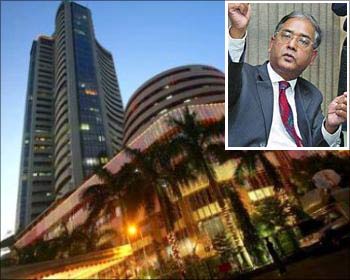If you ask a retail investor if he has made
money in the last 5 years despite the broader indices hovering in the range of
19,000 to 20,000, the answer would be no and in fact they would swear not to
touch the capital market again. So, the question arises, “Have the Mutual Funds
lost the charm” or “Have they been mis-sold which investors have realized and
vowed to give a pass”? Probably these questions must be the pondering in the
mind of SEBI, India’s Capital Market Regulator while zeroing in a way to make
Mutual Fund a simpler investment product. And they played ‘HOLI’ by assigning
Color Labels to different categories of Mutual Funds to define the level of
risks – High, Medium or Low. But the product labeling comes with a disclaimer
“Investors should consult their financial advisers if in doubt about whether
the product is suitable for them” for investors who are still not able to
decide the fund based on their objectives and investment risks. Since ‘Red’
invites a bad rapport and somehow gives a negative signal, SEBI played safe by
assigning a
Brown Color for high risk products so that investors should not disown
those products at all. So, they assigned colors – Brown, Yellow and Green for High Risk, Medium Risk
and Low Risk products respectively.
So, the funds would be labeled based on the
parameters as given below:
1)
Nature
of Scheme such as to create wealth or provide regular income in an indicative
time horizon (short, medium or long term)
2)
A
brief about the investment objective i.e. the product aims to invest in equity
or equity related securities of, say, top 200 companies by Market
Capitalization.
3)
It
will also label the level of risk by assigning the respective color box along
with the narration of risk i.e. High, Low or Medium
The SEBI also mandated that these labeling
should also be disclosed in front pages of all related documents like Common
Application Form and NFO Forms, Scheme Information Documents (SIDs) and Key
Information Memorandum (KIM) and in all kind of advertisements wherever
displayed be it print, tv or online.
The ruling would be applicable with effect from
July 01, 2013 to all existing schemes and all future schemes to be launched.
Fund Houses may choose to follow the provisions before the effective date.
Will it help first
time investors?
If a grocery buyer goes to the market to buy an
edible product, he selects the product based on the green veg label or red
non-veg label based on his requirement. However, he may not be able to
understand its constituents if he is not literate. Ditto may be the case with retail
investors with these MF labels; they may end up buying the mutual fund
depending upon his risk appetite but the product may not be really suitable for
them. So, they must seek help from the Financial Advisor who will help them in
selecting the right product. So, will the advisor get away even if he has recommended a wrong product? It does not seem easy in the current given scenario. Recently AMFI introduced an Employee Unique Identification Number (EUIN) where the advisor needs to mention this unique id in the application form and would be answerable for the logic of investment irrespective of wherever he moves as the code remains unique to him/her only.
Moreover, it is also suggested that investors must undergo risk profiling taking into account of their income, age, assets, liabilities and other goals and then reach on their risk appetite. Apart from the performance, portfolio philosophy and fund management style, one should also look into costs which are measured by expense ratio and exit loads.
What turns off?
Though SEBI tried keeping three simple colors –
Brown, Yellow and Green, it failed to answer for the vast product varieties
within the same categories.
Exempli Gratia - Within equity category, there are
many sub categories like Large Cap, Small Cap or Thematic. Though they all have
equity as common constituents, the constituents differ in their inherent risk
which may deviate very high. A pure FMCG fund and a Pure Diversified Equity
Fund would be labeled as Brown Box with High Risk; however, both have separate
set of risks defined internally.
Also AMFI must market the new labeling actively
and position it in a way that investors don’t end up in same hassles of
selecting the wrong Mutual Fund which does not align with the investment
objective and horizon.
Laudable ground work;
confidence still shaken
Though it is a laudable effort by SEBI to educate
investors and help them take an informed decision, the time will say whether it
really helps to bring back the lost charm in Mutual Funds. Or will the product
labels lose its spark despite a colorful mix? Despite all these measures, it is
very important to instill the confidence wobbled in recent past which is
leading to continuous outflows of retail money from the Mutual Fund industry. Constructive
Investors’ Education is the mother of all steps. Hope the SEBI’s new ‘HOLI’
colors make a colorful impact in investors’ life. Happy Holi!
Happy Investing!




